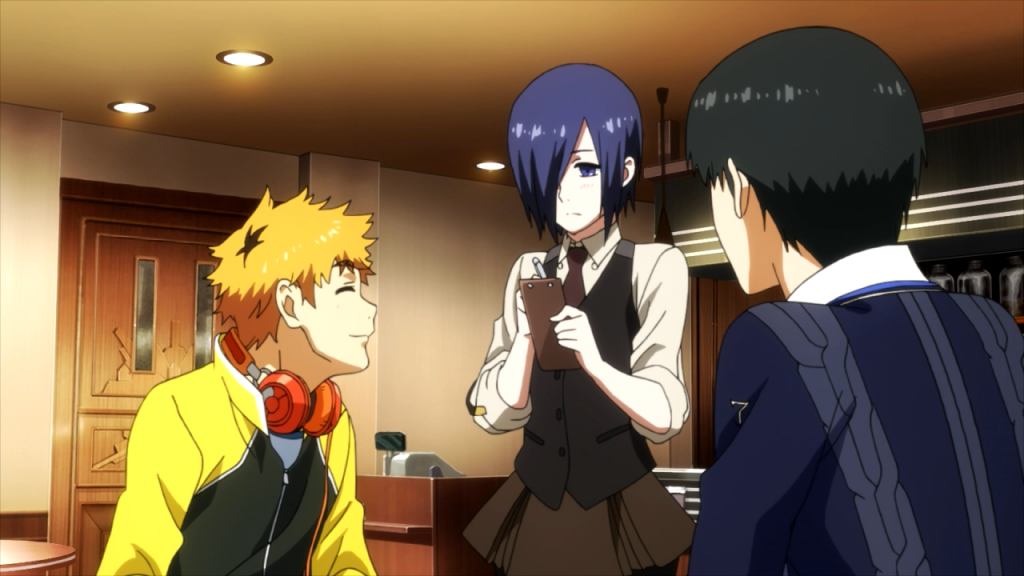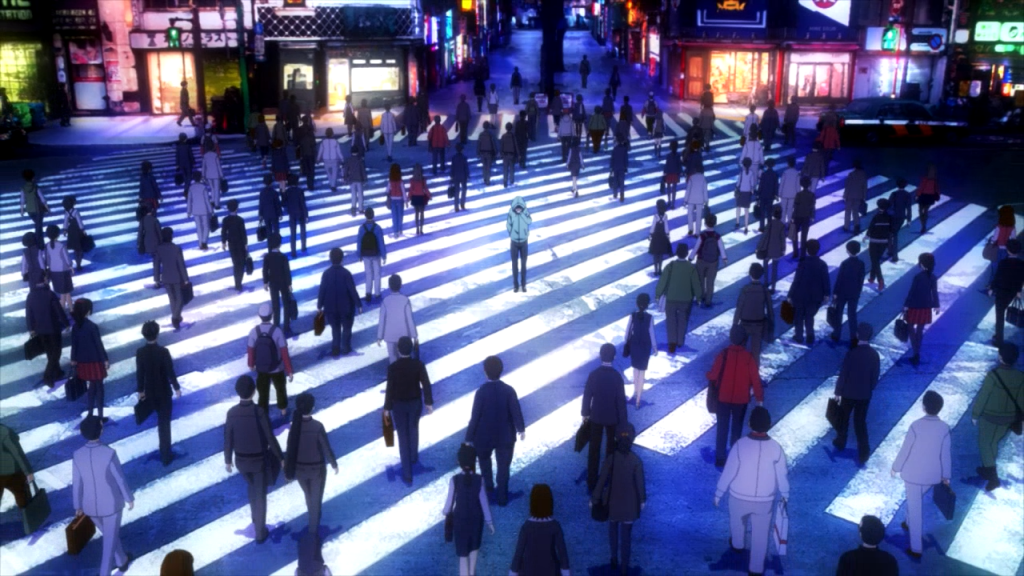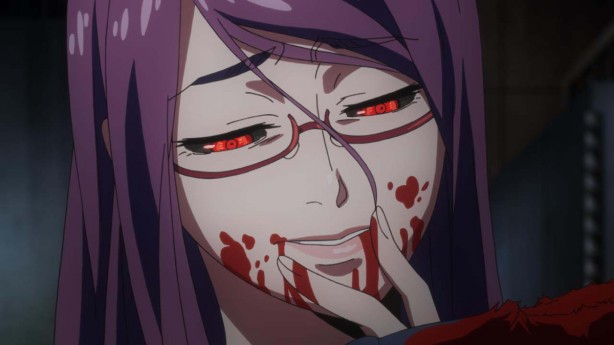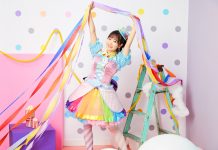Anime: Tokyo Ghoul (東京喰種-トーキョーグール-)
Animation Studio: Studio Pierrot
Genres: Action, Horror, Psychological, Supernatural, Drama
Episodes: 12
One of the many shows folks were looking forward to this summer was Studio Pierrot’s adaptation of the popular horror manga Tokyo Ghoul. The manga being known for its disturbing, tragic story as it follows the tale of ordinary college student Ken Kaneki as he transitions from human to a man-eating, supernatural being known as a “ghoul”. While this may sound generic, the manga draws its appeal from being unabashedly gory and surreal. Unlike the archetypical anime protagonist, Ken Kaneki suffers. A lot.
It seems like a tall order for an anime to live up to the expectations of an audience who has come to love the manga and thus has generated hype for it. Does this dark tale live up to the hype?
Story:
As the title of the anime suggests, the story takes place in Tokyo. There exists a race of beings known as “ghouls” who look and behave like humans for the most part, but change their form and take on unique abilities as their eyes redden. They are a menacing looking bunch for sure! While during day to day life one cannot tell if a person is a ghoul or not, they do have one trait that stands out dramatically. This of course, is that they eat humans.
Our protagonist – the young Ken Kaneki is a typical college “nerd”. He’s shy, polite, and enjoys reading. His life takes a downward spiral however when through the course of a freak accident he becomes part ghoul. This creates an interesting dynamic as our relatively boring hero is now turned into a monster – one that is feared and loathed by the general public. Over the span of the anime we see the trials and tribulations Ken goes through and we are faced with themes such as the loss of innocence, injustice in society, having to come to terms with unfortunate circumstances and making the best of it, as well as the justification of both sides – humans and ghouls.
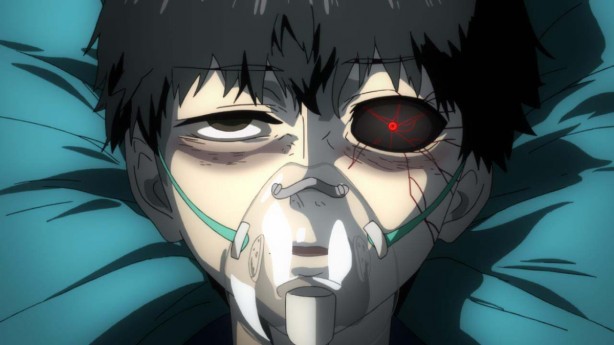
The plot certainly has its fair share of emotional scenes as it is just as much a drama as it is an action show, and by the end of it one would have developed some sort of connection with Ken, even if he isn’t the most likeable person at first. His character suffers from having to be portrayed as overly weak – this leaves audiences impatient and constantly wishing for him to take a stand. When he finally does however, it’s worth it!
What the story suffers from in this adaptation is the pacing of the show. It starts fairly strong but there are lulls in between where either nothing consequential happens, or one is left thinking “how is this relevant to the actual story?” In a show where there are only a total of 12 episodes, each episode counts and while the finale makes it worth it, some may have to trudge through an episode or two they might find boring or useless.
Another unfortunate product of having such a short course for an adaptation is having to either rush or completely skip certain details. The cast of characters are richly developed in their own ways in the manga, however the anime fails to capture much of it, and we are only given shadows of characters who are a lot deeper than they seem. If one hasn’t read the manga, perhaps it can be overlooked but it is still a desire left unfulfilled.
On the whole, the story manages to do its job when it comes to delivering a grim personal story, and ultimately showing the development of a character. The more prominent side characters are quite likeable as well – in fact, arguably more so than Ken himself.
What one should look for and understand when watching this is that it’s about the development of Ken – how he progresses as a character, his internal strife, how he comes to terms with his situation and becomes who he is. If one knows that this is the focus of the show, perhaps they won’t be disappointed by other factors that aren’t as strong.
Visuals and Animation:
In terms of visuals, Tokyo Ghoul looks beautifully grim – and that’s exactly what they were shooting for. The dark backgrounds with colorful characters and foregrounds contrasts nicely, leaving the right impression for a show of this genre. While the characters look sharp and aesthetically appealing, there is still a sense of impending horror and a constant feeling of despair because of the settings and backgrounds. This is most applicable during fight scenes, as most take place in either during the night, evening, or indoors (and by indoors we mean places like underground torture chambers or abandoned dilapidated buildings… They take their atmospheres seriously at Studio Pierrot) CGI animation is used sparingly enough that it’s not “in your face” or irritating.
The urban scenes on the other hand are vibrant and beautiful. There are always many people shown on screen during those scenes, as well as the colorful filters used to layer the streetscapes making the city feel alive. It puts the “Tokyo” in Tokyo Ghoul!
There’s more to a nice looking anime than just a nice art style though. The animation is important as well – how smoothly it runs during action sequences, if it looks sharp and well put-together, whether or not CGI is used appropriately, etc. In this regard, Tokyo Ghoul delivers excellently. Excellent creative vision by the animators helped make some great looking action sequences, where the motions of the characters flowed nice yet tightly, and interesting effects were used to emphasize certain sequences – especially the gorier ones. Gore is one thing the show does not skimp out on in the least.
Unfortunately however, the gore was censored due to it being too graphic to be aired on television and thus the completely unedited version would only be available once the DVD or Blu-Ray copies are released for purchase. This is something that turned many fans off, as even the censoring wasn’t cleverly done. Nothing more than a dark shadow was cast over the frame in the area that was to be censored, with no real context. In scenes where the focus was on the violence, this made no sense and the screen was almost completely dark. This is one of the few major turn offs the show hosts, but on the bright side if one waits and purchases a copy they’d have access to the uncensored version.
Sound and Music:
Sound is one of Tokyo Ghoul‘s stronger suits. The sound design, editing and effects are top notch, giving one a sense of immersion in several different kinds of environments. From the more open, densely populated urban ones to the shady, damp back alleys, the sound effects coincide with the visuals nicely.
What really brings it over the top in terms of sound are the voice actors though. Natsuki Hanae (Inaho – Aldnoah.Zero, Hikari – Nagi no Asukara, Haruichi – Diamond no Ace) lends his voice as Ken Kaneki. This is brilliantly done as Hanae’s acting during scenes are agony and despair are absolutely heart wrenching. It truly brings out the character and makes one feel for him. The ending of the first episode being the most prominent display of this.
Not to be left behind however, Kana Hanazawa (Kanade – Angel Beats, Manaka – Nagi no Asukara, Kosaki – Nisekoi, Kuroneko – OreImo) voices Rize, another important character. She transitions masterfully from a seductive, girly tone to creepy, maniacal laughter in a split second. It’s truly admirable and makes her character that much more menacing. A scene to display this would of course be this one from the first episode. Of course in addition to these two, Sora Amamiya (Kaori – One Week Friends, Akame – Akame ga Kill, Asseylum – Aldnoah.Zero) as well as a slew of other voice actors deliver their performances wonderfully.
One of the best aspects however was the music – namely the opening theme. This has been regarded by many as one of the best openings from this season. The song (Unravel – TK) as well as the video are both beautiful, capturing the essence of this show perfectly. But what’s the point in talking about it when you can just hear it for yourself!
The soundtrack – while not memorable, sets the tone of the show, especially during the darker scenes. Perhaps one of the reasons one doesn’t notice is there is because one is so immersed as a result of it – in that sense it is perhaps a good thing that it isn’t noticed. All in all, the sound quality for both voice acting and music is great and the opening theme itself is a track worth listening to even if one isn’t into the anime!
Final Verdict:
Tokyo Ghoul is not without its flaws. Uneven pacing, a multitude of underdeveloped side characters, a promising start and great ending with a wobbly middle, and censored gore all gather together to beat at the otherwise great experience of watching this anime.
However, it tells a gripping story of internal conflict, shows a war on a certain kind from more than one perspective (there can be bad humans and good ghouls too), is beautiful to watch if one can handle the grim tone, and sounds amazing on all fronts. Keeping these in mind, it is an enjoyable anime and with a second season coming along it is well worth watching as soon as possible.
Did you watch Tokyo Ghoul this season? Did you enjoy it or were you disappointed? Let us know your thoughts in the comment section below! Until next time, Hamza “Tomoki” Khattak (aka the Toronto Ghoul) signing out!


